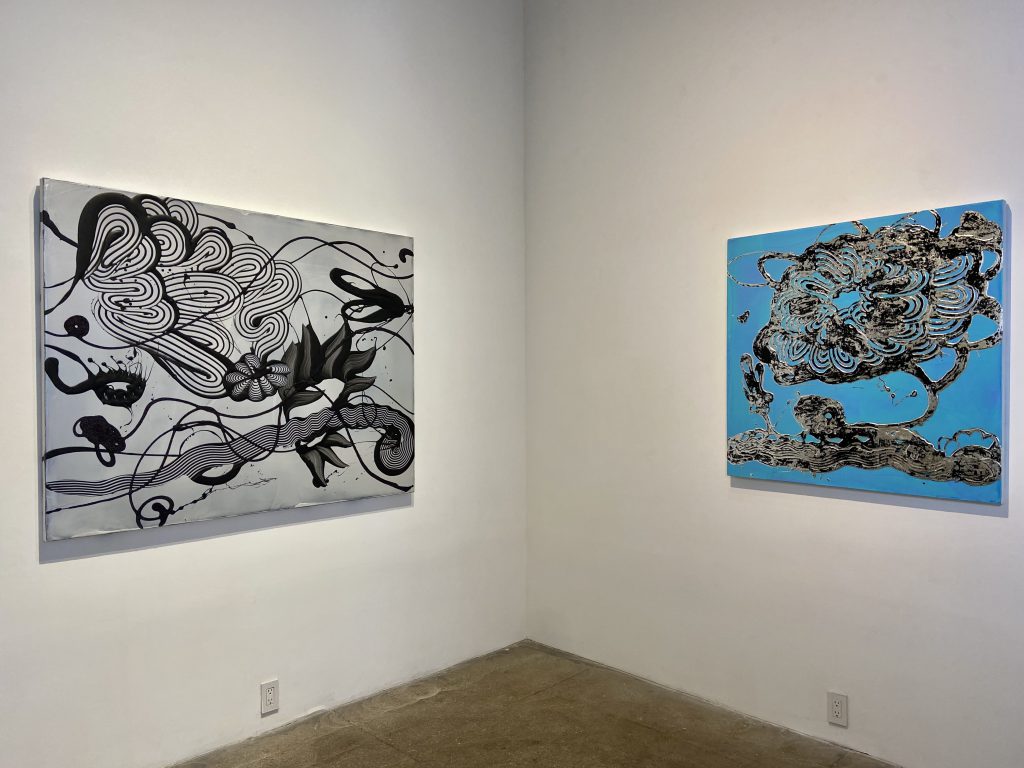
During the summer months, a visit from Catherine Howe is always welcome. Her arms are usually folded around a gift bouquet of rare beauty, harvested feet away from her bucolic studio. These plucked and carefully selected arrangements curve and swirl in organic arabesques, explode into fireworks, sputter and unfurl, dance and tremble. The trumpet shapes contrast with the plume shapes, the berries nestle with the beebalm, the ornamental onions live cheek by jowl with the black-eyed Susans. There is symmetry with non-symmetry, balance with mess. I am sitting now with one of these miracles in a vase on a wooden stool nearby. I’m pretty good with the names of flowers, but many of the blooms I do not even recognize, let alone know all their names. They are ephemeral presences that will soon droop and drop their petals to the floor. I will break out the dustbuster, empty the browning water, and wait for the next visit of Ms. Howe, hoping for the next nosegay. But thank God she is also an alchemist, a talent far beyond her impressive skills at gardening.
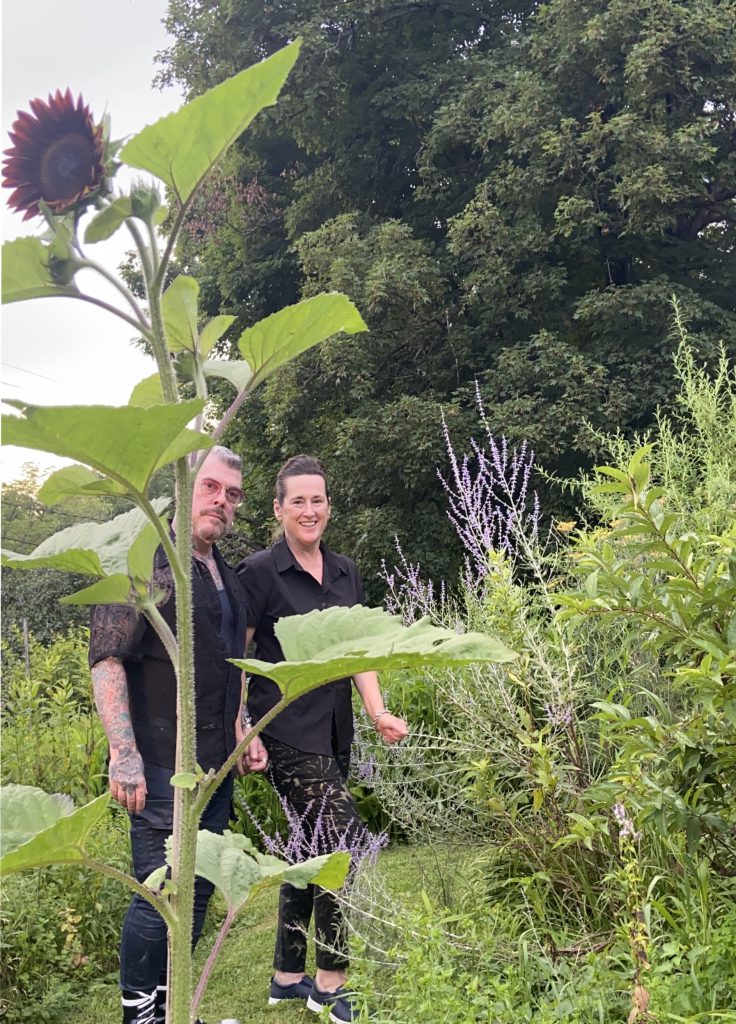
I visited Howe’s “laboratory” recently, before her handiwork was shipped off to a new two-person exhibition, along with glazed ceramic works by sculptor Andrew Casto, at Winston Wächter Fine Art in NYC (July 15-August 27th). I witnessed the long tables, the pigments, the jars, the precise mixtures, the magic wands, motes of gold and silver and copper in the air. . . and lining the walls were her latest experiments in catching and preserving what seems to be non-preservable. As colleagues, we try to regularly check in to see what is cooking in our workshops. The Corona virus kept us apart for longer than we had in over a decade. My recent visit was a memorable one; for me these newest works are perhaps Howe’s most uncanny and preternatural. Glowing, reflective, chatoyant, enigmatic and Delphic, the canvases are a forthright testament to the creative process during a very difficult time.
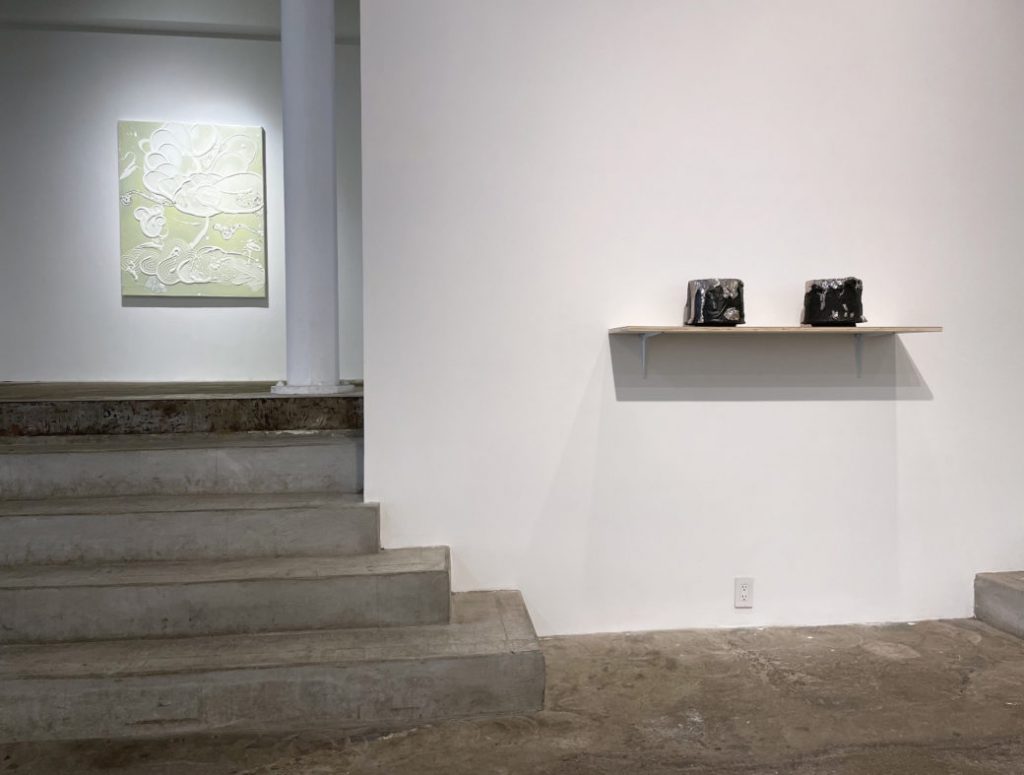
The recent paintings are hard to capture in photographs, and change drastically in different light. They must be experienced in person. They are also hard to describe. Howe starts with many layers of translucent shades; the surfaces are scraped and troweled, almost polished. Their colors are serene: teal, ballet pink, citron, bronze, cobalt, and champagne. They then have rich, built up surfaces applied with unexpected batter-like plops, odd dribbles, squiggles and squirts, and bravura calligraphic flourishes. I have been painting pictures for half a century, but I can’t deduce her exact process. Some of the gestural markings have miraculously transformed to shiny metals! Some bear vestigial traces of some fluorescence or iridescence. We follow their gleaming trails around the rectangles, the movement is like trapped fireflies in a mason jar. She has caught the moment when the breeze disturbs the hollyhocks.
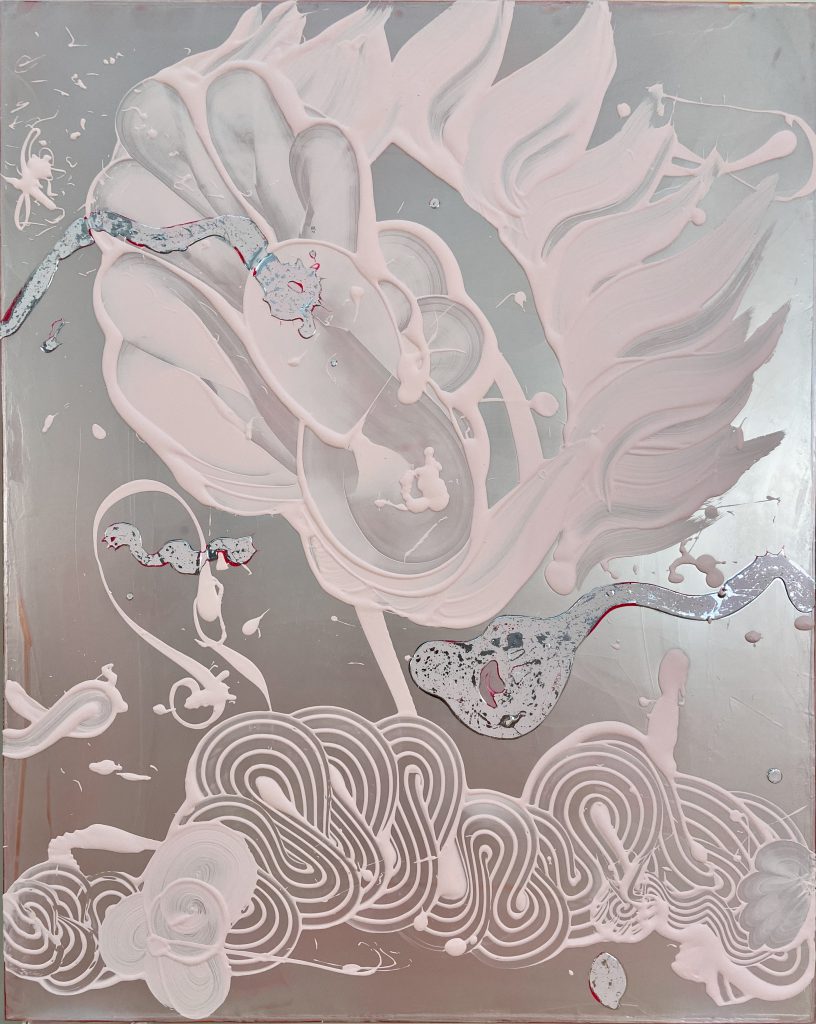
2021, luminous and synthetic pigments, acrylic, metal leaf on canvas; Courtesy Winston Wächter Fine Art.
The paintings’s imagery seems to point toward botanical blooms most often, chaotic weeds somehow tamed, their sexyness on high alert, with pistils and stamens calling for their pollination, as in the large Opal Painting (Pink/White/Silver 2021) and Opal Painting (Citron/White/Pale Gold 2021). Wraith-like shapes with embellished ectoplasm flirt with the dominant blossoms in some tacit ritual.
Or perhaps we are really underwater, as could be read in Mica Painting (Gold/White/Champagne/Silver 2021) and Mica Painting (Black/Pearl 2021). We see the flotsam and sea anemones drifting with the tides, and anxious eels punctuate the depths. Carefully orchestrated with elegantly limited palettes, these subaqueous fantasias give us unexpected moments of visual weightlessness.
At other times, I feel Howe gives us glamorous Rhorshack tests to ponder or project upon–clouds or posies? Ground or sky? Planted or unearthed? Vegetable or Mineral? The effect is rich and heady. The magician pulls no punches with her potent brew.
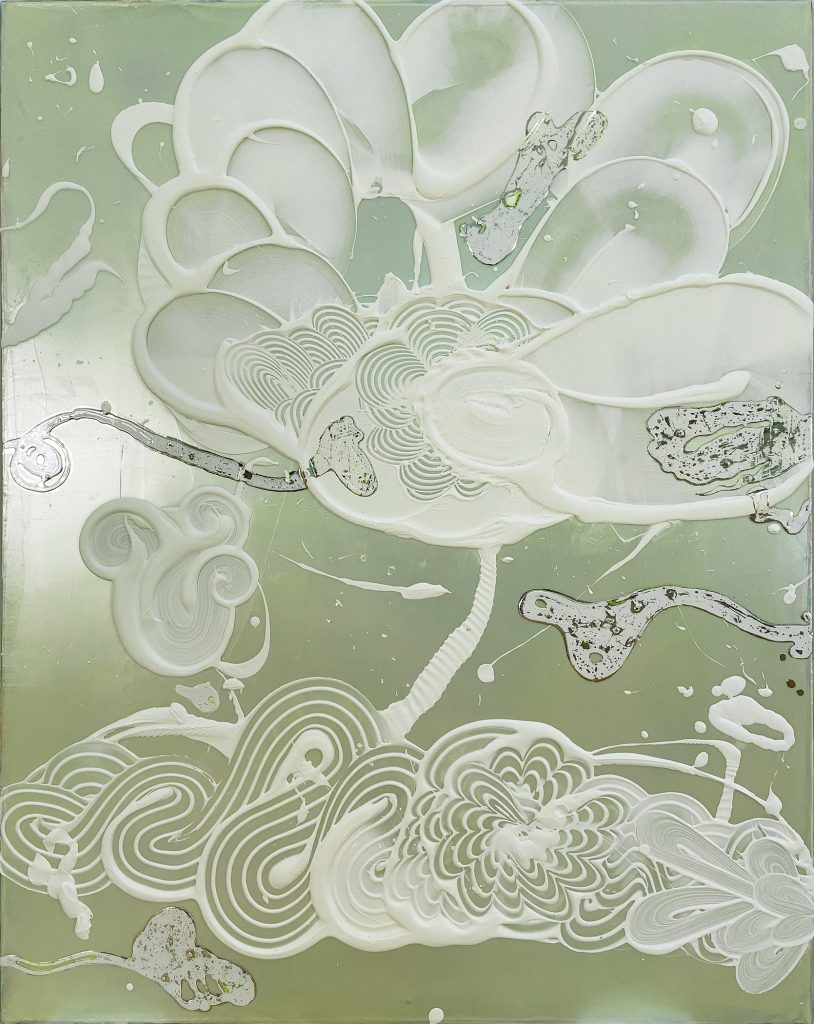
Courtesy Winston Wächter Fine Art. ,
In 1988, I made a series of ten paintings inspired by an obscure 17th-century alchemical technique, developed by the Abbe de Vallemont, Pierre de Lorraine. The process involved an elaborate series of events to preserve the “Spectre of the Rose” that could be summoned to reappear in a flask when warmed by the sun. My images were made during the very early days of the AIDs crisis; it didn’t even have a name at that point, but many of my friends were mysteriously dying. The doctors were then grasping at straws for a miracle, not unlike the alchemists of old. The titles of my paintings took the form of verbs: Take, Burn, Collect, Distill, Extract, Lay, Expose (to both sun and moonlight), Swell, and finally Reappear. These canvases were my meditation on the crisis, done obsessively and with very little references or research. To my shock, when delving deeper into alchemical imagery, my intuitive compositions were nearly identical to some early engravings. It seems I had been channeling the past magical thinkers, even if their poetry was scientifically somewhat clueless. They tried their best for thaumaturgy, as had I.
This project of mine came to mind while in Howe’s studio, looking at the latest works. Covid made us all become hermetic, and she was not immune in feeling the numbing chill of the past year. Her eccentric yet oddly logical processes in creating her paintings are akin to those who have labored with joy and anxiety waiting for the ineffable to be conjured. Howe works alone, somewhat mysteriously. Living not far from her, I have driven by in the evenings and seen her studio lights on, and I imagine her checking in on the progress of the drying of one of her latest specimens, as if observing the proofing of a strain of saprophyte dough, or the evaporation of the pitchblende in the petri dish. I imagine her wearing a labcoat, a strand of hair loose from her dark chignon, bravely introducing a new element in the process that will be the final step toward success.
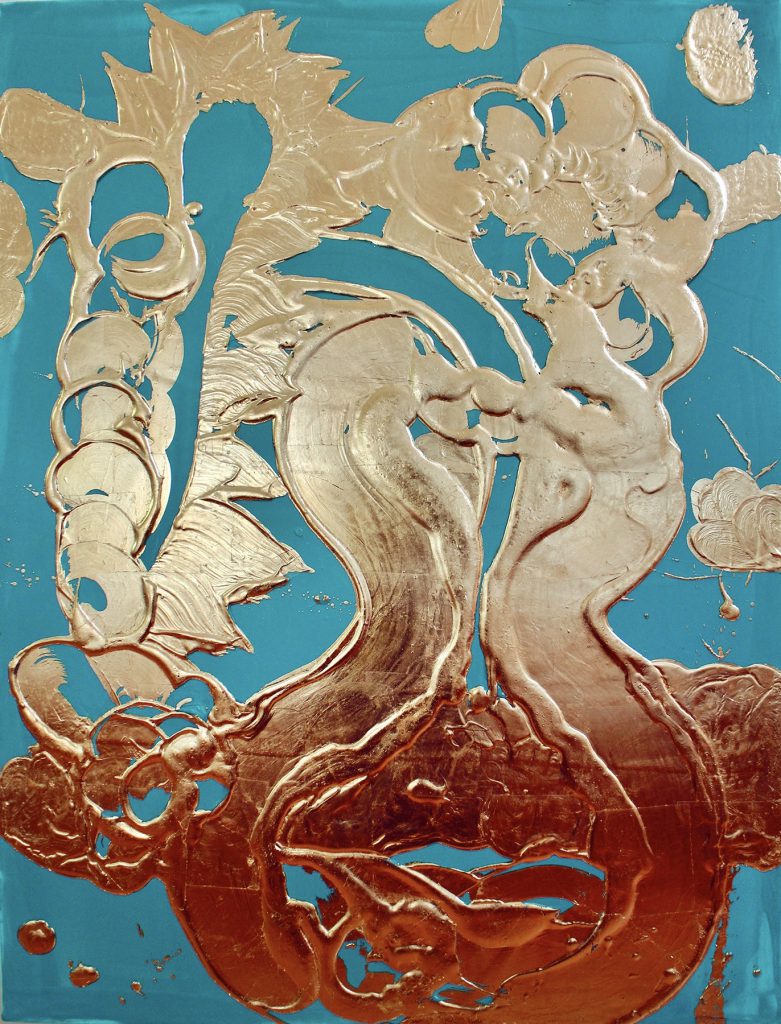
When they are great, paintings, drawings, and sculptures have the blessed ability to stop time and preserve it forever, like a perfect frond in amber. As modern humans we have become increasingly seduced by anything that moves, but the picture-purest loves the notion that the gaze can last forever, without a beginning or end. We can look as much as we desire, uninterrupted. I love the look of Howe’s frenzied hieroglyphics when she exuberantly launches into her impasto surfaces; it is like a treacherous trapeze act that requires controlled abandon, and needs to appear reckless. But the pause after this in the process is what is so interesting to me, and the fastidious gilding gives the raw expressionism unexpectant gravitas. Sometimes the lily is better reflected upon once gilded.
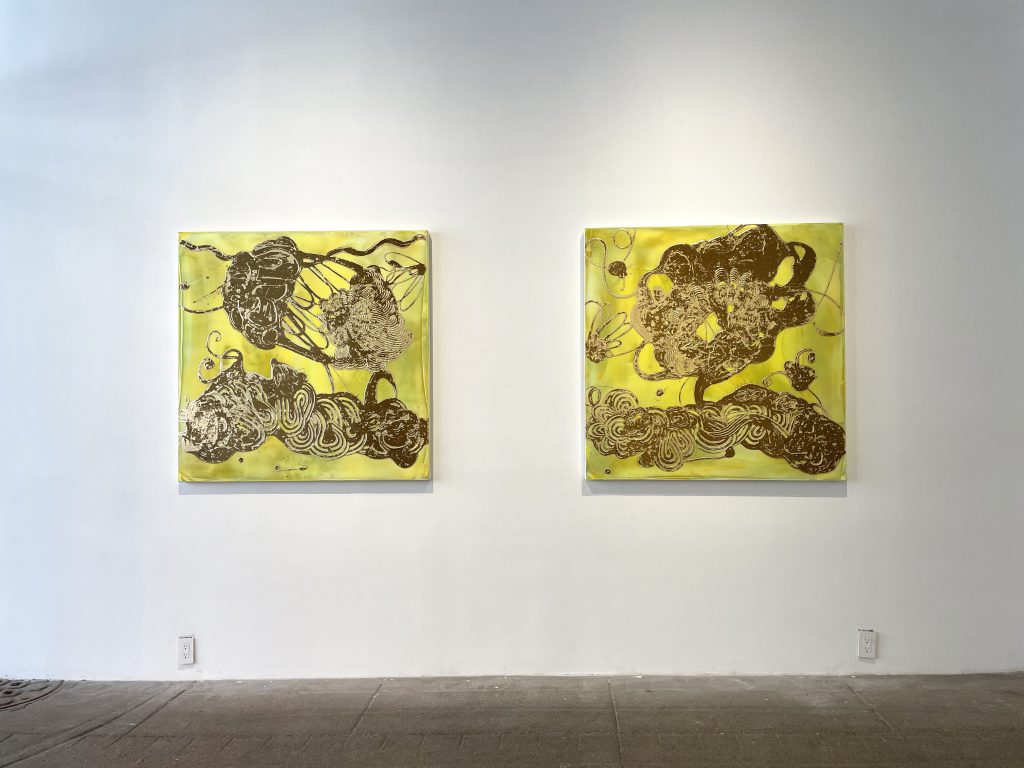
Catherine Howe is like the badass bastard lovechild of Georgia O’Keeffe and Jackson Pollock. Her parents probably wouldn’t recognize her as their legitimate heir, but the vulva-like flora and painterly ejaculations are hard to mistake in her canvases’ DNA. Sure, there are other relatives– Aunt and Uncle Kay Sage and Yves Tanguy, weird Cousin Charles Burchfield, peculiar Auntie in the attic Louise Bourgeois–to cite a few in the family tree, but the truth is she has little interest in her ancestry. Post pandemic Howe has become more bravely orphaned and assured, conjuring the work in her own concentrated space. Free from art historical lineages, she is determinedly making and making and making, and hearing her very own invented melodies in her head.
She is also equally uninterested in her own past. The cursory Google image search will show many facets of her oeuvre over time: strange clown girls, neoclassical heads in stained miasmas, imposing melting horses, slippery and blurred jewel-toned Dutch still lives. The thread that follows through all of the work, however, is a penchant for definitive mark making, a contrary inclination toward simple, bold, familiar iconography, and allowing the viewer a place to dream. Nearly every genre she has explored from her past has been generous in it’s open-ended non-directed viewing. This has not changed in her decades of creativity.
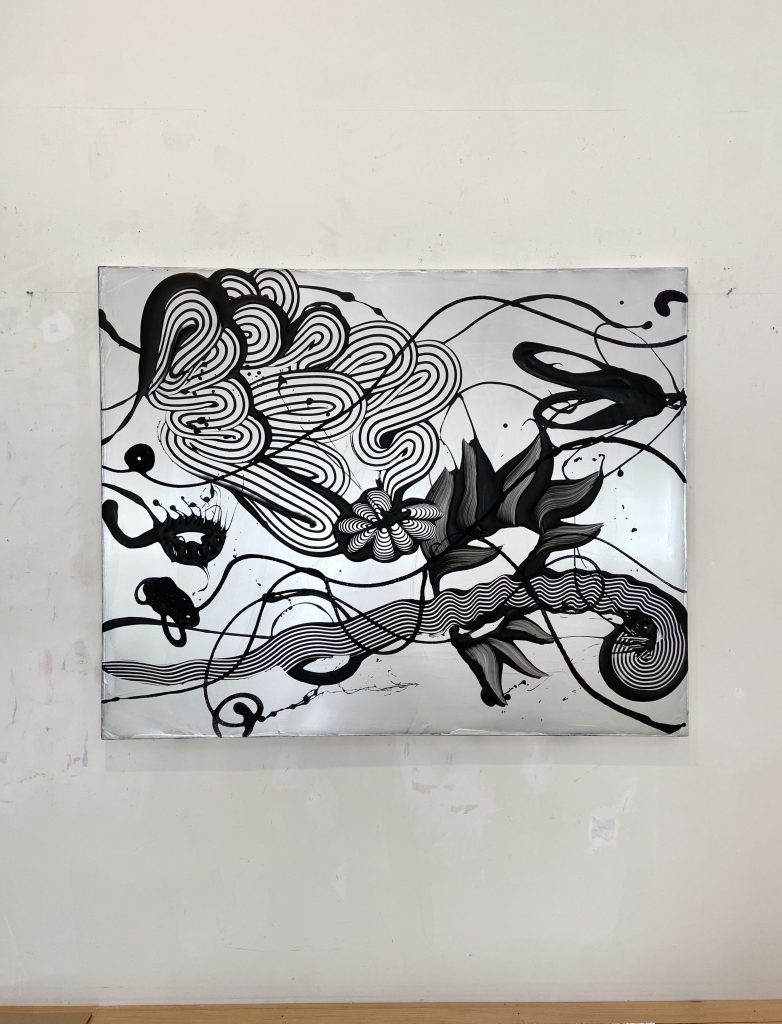
Catherine Howe, Mica Painting (black/pearl), 2021, pigments, acrylic mediums, glass micro-beads on canvas. Courtesy Winston Wächter Fine Art.
Beauty is a balm for her, as she has said, to heal our damaged psyches. Pleasure need not be withheld now; in fact we all crave indulgence. In her “aerie” studio, Howe surveys a road that is twisty and uneven, at times dangerous and uncharted, but always enormously scenic. She will then swoop down and inspect each blade of grass, alert for four leaf clovers, or mica in the mud.
Then presto: the lead is turned to gold. ●
Text © Thomas Woodruff 2021
Thomas Woodruff is a New York based artist who was born in New Rochelle, New York. He received a BFA from Cooper Union, NYC, in 1979. He taught at the School of Visual Arts, NYC, for almost 30 years, and chairman of the BFA Illustration and Cartooning Department from 2000-2021. He has held more than 20 solo exhibitions, and 100 group exhibitions internationally. He showed for many years at P.P.O.W. Gallery, New York. His work is in the permanent collections of the Brooklyn Museum, MIT List Center, The New School, the Honolulu Contemporary Museum, and the Art Gallery of Western Australia, among others.
Catherine Howe was born in Buffalo, NY, and received an MFA at SUNY, Buffalo. She was a curator at Hallwalls, NYC, 1987-1990; and Associate Director, White Columns, NYC, 1990-1994. Howe taught on the MFA faculty at the New York Academy Of Art from 2000-2021. She has exhibited extensively in the U.S., including solo exhibitions at Winston Wächter Fine Art, VonLintel Gallery, William Shearburn Gallery, and more. Her work has also been included in international exhibitions in Paris, London, Munich, and Amsterdam. She lives and works in NYC and the mid-Hudson Valley.